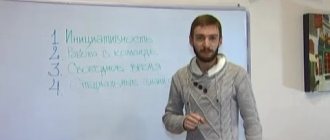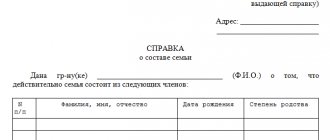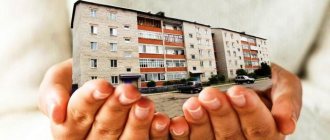Various decisions regarding the property of one apartment building are made jointly by all owners of apartments in this building. For this purpose a vote is held. It can be presented in different forms. It is often not possible to gather all residents in one place to resolve important issues, so the chairman decides to use the in-person and absentee voting method. It involves using two stages to make a decision. Residents of the building must understand how in-person and absentee voting of homeowners is conducted, how all citizens are notified about it, as well as how the notification and protocol are correctly drawn up.
What forms of meetings are held?
The law clearly states the forms in which meetings of residents of the same building can be held. You can use a specific form depending on the situation, which can significantly simplify the voting procedure. The following forms are used by law:
- Full-time. It involves gathering citizens in one place where all important issues are discussed. The main problem with such voting is the difficulty of obtaining an optimal quorum, since many residents are unable or unwilling to attend the meeting. But with direct communication between citizens, it is possible to have a good understanding of all important issues. Every citizen can submit their questions.
- Correspondence. Residents do not meet together, so each citizen expresses his will only through a ballot received from the chairman of the house. Completed documents are submitted by the due date. With the help of such voting, it is possible to obtain votes from a large number of residents. Citizens' time is saved, but there is no opportunity to thoroughly discuss all issues. For such voting, various electronic services are often additionally used, which greatly simplifies the process.
- In-person and absentee voting for homeowners. The procedure involves combining some features of the two above schemes. Initially, a face-to-face meeting is held, which is attended by all residents interested in personal discussion of important issues. The rest of the citizens are given absentee ballots. This method makes it possible to achieve the required quorum, but a lot of time is spent on the procedure.
The specific form is indicated in the announcement of the meeting. If it suddenly changes, then decisions made at such an event are easily invalidated. A meeting is considered competent when the required number of votes, called a quorum, is gathered. Additionally, numerous formalities must be observed. The chairman must have a good understanding of how homeowner voting is conducted in person if this method of decision-making is chosen.
Determining the quorum of homeowners in apartment buildings
Quorum is the minimum number of participants at which the meeting and the decisions made at it will be considered legitimate.
How is it calculated? According to the Housing Code, the quorum must be at least half of the possible participants.
In discussing individual problems, sometimes the presence of 2/3 or even 100% of the owners is required.
For this reason, holding two meetings in parallel is not possible. After all, here and there you will need more than 50% of the owners.
It is necessary to calculate in advance the required number of participants, based on the essence of the issues being discussed and the number of owners on the voting date
If you wish, you can change the size of the quorum by general decision, for example, increasing it from 50% of the owners to 2/3 or more.
It is important to remember that quorum should not be determined simply by the number of people present, because each of them owns a different number of square meters. Therefore, before the meeting, it is important to count the number of votes owned by residents and their ratio to the total number.
In many cases, a formula is used in which 1 sq. m is equal to 1 vote . Therefore, owners of large apartments automatically have more weight in the calculations.
How is a meeting called?
The discussion may be regular or extraordinary. In the first case, a meeting of the owners is usually held annually. Such meetings are required by law. At these meetings, the council of a particular apartment building provides residents with a special report. It contains information about all work performed on the house. Information about the financial condition of the fund is provided.
Extraordinary meetings may be held if necessary. They discuss current and important issues. They are appointed by direct residents or council members. Usually held once every six months or quarter.
To hold a meeting of owners of an apartment building, it is important to properly notify all residents about the planned event. To do this, a written document is drawn up and recorded on information boards located at each entrance of the building. Additionally, such notices can be delivered to each resident personally or placed in mailboxes.
Features of in-person and absentee voting
This method of holding a meeting is becoming increasingly popular due to its numerous advantages. Its parameters include:
- the procedure is performed in two stages;
- the first part is represented by a general meeting of residents, at which all problems are announced and various issues are proposed for discussion, after which all residents who attended this event vote in the standard way;
- Voting does not end there, so the presence of a quorum is not considered an important point;
- the second part is to conduct electronic voting, since all other residents make a decision in absentia;
- the initiators of the meeting designate the time frame within which the remaining residents are required to vote;
- they are notified of which electronic platform this process should be carried out on, and they can also be given paper ballots;
- After voting, votes are counted and a quorum is determined.
After all these stages are completed, the process of making various decisions ends. Usually an optimal quorum is achieved, so there is no need to hold the general meeting several times.
Not all issues can be resolved in absentia
Based on clause 2 of Art. 50 of the Federal Law “On Joint Stock Companies” a general meeting of shareholders cannot be held in the form of absentee voting, the agenda of which includes the following issues:
- on the election of the board of directors (supervisory board) of the company;
- on the election of the audit commission of the company;
- on approval of the company's auditor;
- on approval of the annual report, annual accounting (financial) statements of the company, if the company's charter does not fall within the competence of the board of directors (supervisory board) of the company.
All of these issues are significant, but no joint stock company can ignore the approval of annual accounting (financial) statements. Such a decision must be made by the general meeting annually; it must be included in the plans and therefore is adopted at the annual general meeting of shareholders (participants).
A limited liability company is usually a less structured organization in terms of the system of corporate governance and control bodies. Here, absentee voting is not allowed only on issues of approval of annual reports and annual balance sheets, that is, also the most important issue for the next general meeting of participants.
Legislative regulation
To understand how homeowners vote in person and in absentia, it is necessary to take into account the requirements of the law. Basic information is contained in Art. 44.1 LCD. It lists all the possible forms in which a meeting of residents can be held. Among them there is also a part-time and part-time scheme.
Although this procedure takes a lot of time, it is considered the most effective, since the vote of almost every resident of the building is accepted. A ballot will be prepared for people who were unable or unwilling to attend the meeting in person. It may be presented in paper form, but electronic decision-making platforms are increasingly being used.
What does participation in the meeting give?
In the first part of Article 46 of the Housing Code of the Russian Federation, you can familiarize yourself with the requirements that are put forward for making decisions at the OSS. It is this article that establishes the rules regarding voting and references to the footage of real estate. In addition, in the Housing Code, Article 44, second part, it is stated that a decision cannot be made if the part of those voting “For” is equal to less than two-thirds of all votes. It is the voices, not the people present.
Since in a HOA or other form of management the need to hold an annual or unscheduled collection arises for very good reasons, every owner of residential or non-residential premises in the house should be interested in attending this event. Decisions are made jointly for a reason; the result will affect everyone, including the financial side. Sources
- https://kapremont.expert/mnogokvartirniy-dom/sobraniye-sobstvennikov/kvorum-s.html
- https://www.mos.ru/otvet-dom-i-dvor/kak-provesti-obschee-sobranie-sobstvennikov/
- https://roskvartal.ru/provedenie-oss/6181/instrukciya-po-provedeniyu-oss-v-forme-ochno-zaochnogo-golosovaniya
- https://vgkh.ru/articles/golosovanie-zhkkh/
- https://iskiplus.ru/kak-provoditsya-zaochnoe-golosovanie-sobstvennikov-zhilya/
- https://kapremont.expert/mnogokvartirniy-dom/sobraniye-sobstvennikov/podschet-golosov-obshhego-ssmd.html
- https://PravoNedv.ru/kvartira/zhkh/podschet-golosov-na-sobranii-sobstvennikov.html
- https://spravedlivo.center/articles/obshhee-sobranie-sobstvennikov-kakim-kolichestvom-golosov-prinimayutsya-resheniya/
Advantages and disadvantages
Members of a homeowners' association often choose the in-person or absentee form of voting. This is due to the numerous advantages of such a scheme. These include:
- it is possible to obtain votes from almost all residents of one building;
- you can receive votes in two different ways, so each apartment owner decides which method is considered the most convenient and acceptable for him;
- ensures that optimal quorum is achieved;
- This method is considered especially convenient if it is necessary to obtain at least 2/3 of the votes of the total number of residents in the building;
- the second stage can often be carried out via the Internet, for which the GIS housing and communal services portal is used, which greatly simplifies the vote counting procedure.
But this scheme also has some disadvantages. These include the fact that the procedure takes quite a lot of time, as it is implemented in two stages. Additionally, council representatives have to count twice.
What issues can be put to a vote by the owners of an apartment building?
The General Meeting of Owners may make decisions on:
- reconstruction of a house, major repairs of common property in an apartment building, the use of funds from the capital repair fund, reconstruction and (or) redevelopment of premises included in the common property in an apartment building;
- choosing a method for forming a capital repair fund, increasing the amount of contributions for capital repairs, choosing a person authorized to open a special account at home and carry out transactions with funds in the special account;
- receipt by a homeowners' association (housing cooperative, housing complex, management organization) of a loan or loan for major repairs;
- the limits of use of the land plot on which the apartment building is located, improvement of this plot, installation of a barrier in the courtyard of the house;
- concluding agreements for the installation and operation of advertising structures, if this involves using the common property of the owners in an apartment building;
- choosing a way to manage the house;
- exit from the renovation program;
- current repairs of common property in an apartment building;
- conclusion by owners, acting on their own behalf, of agreements with resource supply organizations and the regional operator for the management of municipal solid waste;
- consent to transfer residential premises to non-residential premises;
- other issues.
Preparation for the procedure
Before voting, it is important to properly prepare for this process. Initially, council members must understand how absentee voting of homeowners is conducted, which allows them to study the features of this process. To do this, it is advisable to study federal and local regulations.
Next begins the actual preparation, which consists of performing the following actions:
- all issues that will be discussed at the meeting are determined;
- a notice is drawn up on the basis of which all residents are notified of the meeting;
- an absentee voting ballot for homeowners is being prepared, containing all the issues that will have to be resolved during the event;
- Residents are informed about the event 10 days before the appointed date, for which registered letters are usually used, but other methods can also be used, for example, personal delivery of a notice against signature or posting notices on information boards.
After this, the actual procedure begins on the appointed day. A sample ballot paper can be viewed below.
Determining the number of owner votes
Counting the number of votes of apartment owners on agenda items during an absentee or in-person meeting is regulated by clause 3 of Art. 48 Housing Code of the Russian Federation. The specified legal act states that the number of votes of the owner of the living space is in strict proportion to the size of his share allocated in the right of common ownership of common property in an apartment building.
The calculation of the shares of each owner of residential apartments is carried out in accordance with the legislation of the Russian Federation using a single formula. In addition, the counting of votes of apartment owners during a general meeting on housing issues on the agenda can be carried out according to the approved regulations at the first meeting, about which an official protocol was drawn up. The main thing is that the quorum is maintained.
A striking example is a case from practice, where 1 vote of the owner was equal to 1 square meter of area occupied by his housing. In other words, if a person has a premises of 45 sq. meters, then 45 votes of this homeowner will be taken into account during absentee or in-person voting. In this case, the jointly taken into account number of votes of all owners will fully correspond to the total usable area of the apartment building, information about which is entered in the state register and the passport of the object (house register).
Rules for drawing up a notification
When generating a notification, the following information must be entered:
- chosen form of meeting;
- the immediate date of implementation of this event;
- address of the meeting;
- Full name of the initiator of the procedure;
- a list of issues to be discussed at the meeting;
- the period during which absentee voting is carried out;
- information about the electronic resource with which the process will be performed.
A sample notice can be viewed below.
Is it possible to vote with a simple majority?
The lion's share of issues can be resolved by a simple majority.
It should be understood that we are not talking about the majority of all owners, but only about more than half of those present.
For example, the quorum at a general meeting is 50% of the owners, and the decision is made by a majority among these participants.
In fact, the minimum threshold for making a decision is more than 25% of all owners, which is only a 4th part of their number.
All issues that relate solely to the maintenance of the home and related expenses can be decided by a simple majority.
By a simple majority, you can also decide on the management of the house by holding elections for the Council and the chairman of the house. You will be able to set the amount of their remuneration, as well as determine additional rules for holding a general meeting, for example, by setting the number of mandatory meetings per year.
This number will also be enough to approve contracts for home maintenance and minor repairs.
Hosting an event
On the appointed day, a meeting is held, represented by the first stage of voting. To do this, perform the following steps:
- all citizens who attended the meeting are registered;
- the secretary and members of the commission are elected, as well as the chairman of the event;
- all issues discussed are announced;
- direct discussion is held;
- questionnaires are handed in at the end of the event;
- the results are summed up after receiving the ballots, for which a protocol for the OSS MKD is drawn up.
Then, absentee voting takes place within 10 days. All citizens who were unable to attend the meeting vote on the selected electronic platform. After this, a protocol is drawn up listing all decisions made.
A sample minutes of a meeting of homeowners of an apartment building can be studied below.
Counting methods
Referring to the third part of Article 48 in the Housing Code of the Russian Federation, each owner of premises in an apartment building has the number of votes at the general meeting, which is directly proportional to his share in the rights to common property. Article 37, part one, of this code says that common property is distributed between the owners of residential and non-residential premises of a multi-storey building not equally, but depending on the area that belongs to them in accordance with title documents, for example, on the square footage of a personal apartment .
There are only two ways to count the votes of the general meeting of owners of an apartment building. An example of the first of these is presented below:
- First version of vote counting
Each owner has the same number of votes as the amount of square meters in his personal property.
If an individual owns one apartment in a given apartment building with a total area of 68 square meters, and the house itself, in accordance with information from Rosreestr, has an area of 3674 square meters, he has 68 votes out of 3674. Since in order to make a positive decision, two must vote “For” third out of 3674, using the most common calculator, the Partnership is able to quickly calculate whether the required number of votes has been collected.
In this case there should be at least: 3674*2/3=2449.33.
2. Second method
The second way is to calculate the results as a percentage, which is often used to determine quorum. Using the same numbers as in the first option, an example calculation would look like this:
68/3674*100=1.85 – this is exactly the percentage of votes the owner of the apartment will have.
Since when calculating the results, the same two-thirds “For” are still needed to make a decision, in this case approval should be at least 2/3*100=66.6%.
As you can see, the second option may be more confusing for many, but they comply with Russian legislation and the norms of the Housing Code in particular. When summing up the results, you can choose any one at your discretion, which must necessarily be displayed in the statement (protocol).
The second option, however, is very convenient when it is necessary to calculate the number of votes of the owner of a share of an apartment, especially when there is only one shareholder at the meeting, who is responsible only for himself. The percentage of votes of such a person is determined by multiplying his share by 100, after which the result is divided by the total area of the multi-story building. For example, if a citizen owns ½ of an apartment, then, using the example above, his percentage of votes is ½*100/3674=0.013.
What issues require 2/3 votes?
You need to get 2/3 of the votes in cases where the fate of common property is concerned. This is not about maintenance, but about the disposal of property.
For example, if someone wants to set up a kiosk in a local area and asks to give him a small plot of land for rent, then the permission of a simple majority will not be enough.
The main issue, which requires 2/3 of consonants, is the topic of reconstruction and major repairs of the house.
In addition, you will have to collect the same amount when the question of serious financial expenses is raised.
When large amounts are involved, then 2/3 of the votes is not just a requirement, but also additional insurance that will save you from litigation.
The law specifies only the minimum number of owners that is necessary to make a decision, but you can increase it.
For example, if the law requires only 50% of the votes, the meeting has the right to determine that the consent of at least 2/3 of the residents is required. Remember that general decisions have legal force and can tighten the figures specified in the law at the general discretion. Just remember that you have no right to reduce these standards.
The same voting is necessary if the issue of advertising placement is being decided: installing a billboard and other advertising equipment on the roof, on the walls or in the local area.
This applies to any issue of the use of common property of apartment buildings.
Often the need to make a decision is related to someone's desire to use the premises or area for commercial purposes, for example, converting the basement into a small store or hairdresser.
Another option for using common property is to build a separate porch for the entrance to the first floor when converting an apartment into a store.
It is illegal to change property boundaries without 100% votes. If such a structure violates the boundaries of the common area of the house, it is necessary to obtain the approval of the meeting.
When is 100% presence and 100% voting required?
When the need for unanimous decision-making arises, in many cases the situation reaches a dead end.
Firstly, to gather all the owners and organize a discussion, and even so that everyone speaks in favor, is a very problematic matter.
Secondly, the requirement for 100% of votes in the law is mentioned only in a few moments, and even then without categoricality. There is no question of everyone being present at the meeting.
When, by law, will you need to obtain the consent of all owners? You definitely need to collect all the votes in the following situations:
- Demolition of the building and relocation of residents under one of the programs for renovation and reconstruction of old buildings. This refers to new programs, for example, the program to replace Khrushchev apartment buildings with new buildings in Moscow.
If you have collected only the majority of signatures, you can try to get your way in court, but the likelihood of success is negligible.
- Reconstruction of the building.
Despite the fact that according to the law, only 2/3 of the owners are needed for this item, without full consent you can be sued.We are talking about those cases when, during the reconstruction, the boundaries of the common territory will be changed, in which the property of the residents will be reduced.
You need to get 100% consent if a complete reconstruction of the house or partial renovation will lead to changes in the boundaries of the property, for example, if part of the local area becomes inaccessible for public use.
If you receive the approval of only 2/3 of the owners, then in the future you may run into litigation.
50% + 1 vote of the total number of votes of MKD owners
- The issue of transferring the right to make decisions on the timing and procedure for carrying out routine repairs to the Council of an apartment building.
This is convenient - there is no need to hold a meeting on the issue of repairing the entrance or replacing mailboxes. These decisions will be made by the MKD Council.
- Determining the method of accumulating funds for major repairs (general boiler or special house account). As well as the choice of the owner who will open a special account and carry out transactions with money on behalf of all owners.
How to count votes in absentia: sample protocol
Due to more flexible conditions, in particular longer time frames, many more owners can take part in absentee voting. They express their decision by filling out special ballots. The completed ballot must be submitted by the predetermined time.
Even the busiest residents will be able to take part, because all they have to do is check a few boxes and take the form to the specified location.
The data from the voting sheets is transferred to the protocol.
The quorum for an absentee meeting can be calculated by the number of ballots received, converted into votes also in accordance with the footage.
As in the first case, the results must be calculated, and therefore the protocol must be drawn up, within 10 days.
The MKD Counting Commission must enter data from individual ballots into the general list of participants, indicating the decision of each owner next to his name.
It is necessary to count the number of affirmative votes and their ratio to the total number of participants. At the end, the results are summed up - whether a decision was made on each issue.
Remember that during the same 10 days you must provide several copies of the voting results: one of them must be posted in a place where residents have public access.
How are the results summed up?
To sum up the results, the votes of all residents who voted in person or absentee are added up.
The results are entered into the protocol, and then published on the official website of a particular house. To correctly draw up a document, it is recommended to use a sample protocol of a meeting of homeowners of an apartment building.





